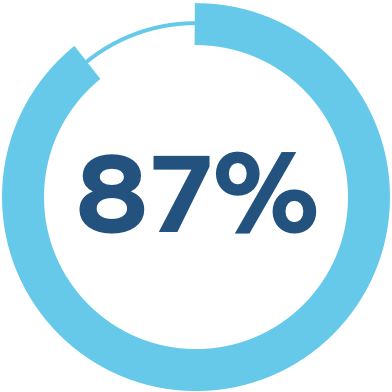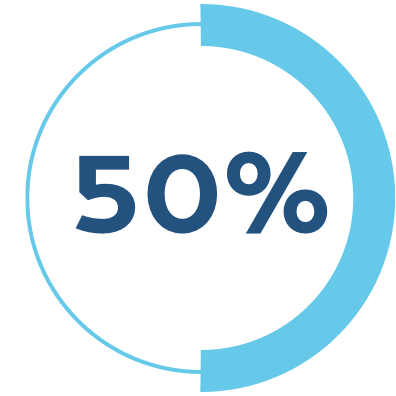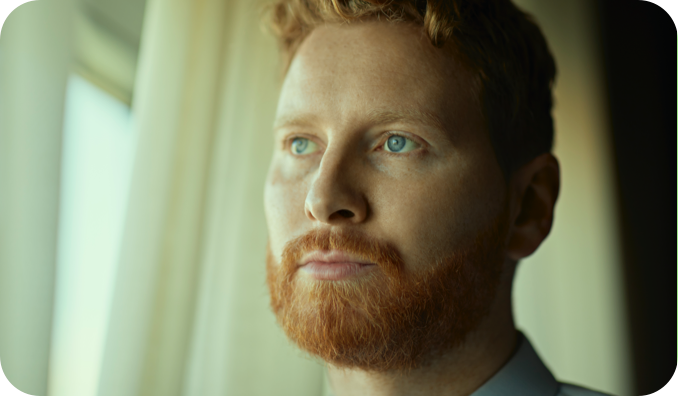
COMPLEX ADHD
There’s more to ADHD than you may think
Being an adult is hard. The complexities of ADHD can make it even harder
AN EVOLVING UNDERSTANDING
The understanding of ADHD has changed since you were a kid
Hyperactive-impulsive, inattentive, and combination ADHD looks different in adults than it does in children
Coexisting conditions complicate ADHD. Accompanying conditions can make life more difficult for those with ADHD. It is important to manage ADHD as well as other conditions that can intensify symptoms.
MOOD & PSYCHIATRIC DISORDERS
Mood and psychiatric disorders are common, and often connected to ADHD

As many as 87% of adults with ADHD also have a psychiatric condition

Over 50% may have multiple psychiatric conditions
The most common coexisting conditions in adults with ADHD include:
- Anxiety disorders: up to 50%
- Bipolar: up to 47%
- Depression: approximately 30%
- Dysthymia (persistent depressive disorder) is 6 times more likely to occur
Almost 100% of those with ADHD experience rejection sensitivity
Rejection sensitive dysphoria (RSD) is characterized as extreme emotional sensitivity and pain that can mimic the above disorders. It’s characterized by sudden intense emotions, like going from feeling totally fine to extremely sad in a flash. Those with RSD are also known as “people pleasers” or perfectionists because of the pain of rejection.
Do you struggle to fall or stay asleep? Or find it difficult to wake up when you need to?
In clinical studies up to 80% of adults with ADHD reported sleep problems.
You’re not alone. ADHD doesn’t shut off when you go to bed. It’s a 24-hour-a-day condition. Adult patients with ADHD often have lower quality sleep, which leads to sleep debt.
This chronic lack of sleep not only amplifies other coexisting conditions like depression, but it also impacts your ability to take care of things at home or at work.
ADHD and sleep problems are both impacted in different ways by medications
For some patients on stimulants, insomnia, or delayed sleep is common.
COMPLICATING A DIAGNOSIS
Coexisting conditions can complicate an ADHD diagnosis
Many of the coexisting conditions listed above can mimic different symptoms of ADHD
The wrong treatments can mean the wrong outcomes for people with ADHD, depending on an actual diagnosis. Just treating a coexisting condition may not solve the underlying problem.
It’s important to have a discussion with your doctor about the relationship between coexisting conditions and ADHD, whether you’re currently diagnosed or not.
SUBSTANCE ABUSE IN ADHD
Substance abuse disorder can make living with ADHD more challenging
Did you know the risk for substance abuse disorder is double for those with ADHD vs those without?
Approximately 23% of adults with substance abuse disorder have ADHD. In particular, the rates of tobacco use, alcohol use, and marijuana use are higher.
Dopamine and ADHD
Dopamine plays a role in how we feel pleasure, and it plays a key role in the planning and initiation of motor responses, activation, and reward seeking.
In adults with ADHD, dopamine pathways may be dysfunctional, particularly during tasks that involve a lot of brain power.
There’s a link between the “ADHD brain” and the “substance use brain”
Evidence shows that patients with ADHD and substance use disorder share similar abnormalities in brain structure and function, particularly changes in dopamine involvement.
The connection to impulsivity, novelty seeking, or seeking “rewarding effects,” and why treating both ADHD and substance abuse disorder can be tricky.
Some ADHD medications have a potential risk of abuse
Stimulants increase levels of dopamine, which is how many drugs of abuse create the rewarding effects in your brain. They are schedule II-controlled substances and they are sometimes misused. They can also be addictive for adults with both ADHD and substance use disorder. You should share your history of substance use with your doctor to ensure you choose a safe treatment plan together.
SIDE EFFECTS IN DAILY LIFE
Some medications—and their side effects—can complicate your daily life
There are more options than ever to treat your ADHD, but some of them come at a cost
- Appetite suppression: Not feeling hungry or finding you’ve missed meals
- Sleep disturbances: Having a difficult time falling or staying asleep, or experiencing daytime sleepiness because of some medications
- Drug interactions: Are you on other medications? Always check with your doctor for drug interactions before beginning a treatment
- Family planning: Pregnant or breastfeeding women need to consider their options
- Discomfort: Dry mouth, headaches, and anxiety can be triggered by some treatments
Keep track of any negative experiences you may have with any treatment
EVOLUTION OF TREATMENT
Because what is known about ADHD has changed, treatment approaches have also changed
There is no one-size-fits-all solution—everyone’s treatment plan is different
Your treatment needs change as you age. What worked for you as a kid may not work for you as an adult. Even if you’re not yet diagnosed, you’ll want to know about multimodal treatment – using a combination of treatment approaches to reach your personal needs.
Behavioral therapy: Cognitive-behavioral therapy combines higher-level organization and planning, behavioral skills training, and cognitive restructuring (a technique that helps people change negative thinking patterns)
Psychotherapy: Dialectical behavior therapy (DBT) includes skills aimed at improving control over emotions and emotional distress, the ability to interact with others, and increased mindfulness
Stimulant and nonstimulant options: Stimulants have long been the standard treatment for ADHD but there are additional options, like nonstimulants, to consider
Key Takeaways
- Hyperactive-impulsive, inattentive, and combination ADHD is not the same in children as it is in adults
- Coexisting conditions can complicate an ADHD diagnosis
- Some medications and their side effects can complicate daily life

UP NEXT





